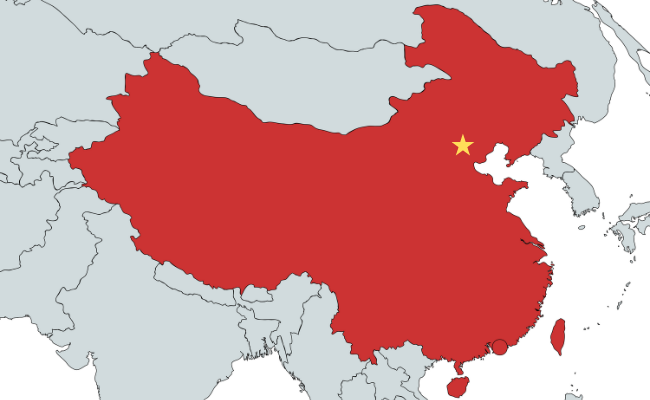In today’s competitive business landscape, sourcing plays a critical role in the success of any organization. But what exactly is sourcing, and why is it so important? In this comprehensive guide, we will delve into the basics of sourcing in business, shedding light on its definitions, processes, and benefits.
Sourcing can be defined as the strategic process of identifying, selecting, and procuring goods and services from external suppliers. It involves everything from supplier evaluation and negotiations to the actual procurement of the products or services needed for a business’s operations. Effective sourcing can lead to cost savings, improved quality, reduced risks, and increased efficiency, allowing businesses to stay ahead of the competition.
By understanding the fundamentals of sourcing, organizations can make informed decisions when it comes to supplier selection, contract negotiations, and managing the entire procurement process. Whether you’re a business owner, procurement professional, or simply interested in the world of sourcing, this article will equip you with the knowledge and insights to navigate this essential aspect of business successfully.
Sourcing in business refers to the process of finding, evaluating, and selecting external suppliers to procure goods and services necessary for a company’s operations. It encompasses various activities, including identifying potential suppliers, negotiating contracts, and managing relationships with suppliers.
Sourcing is not limited to purchasing products at the lowest possible price; it also involves considering factors such as quality, reliability, delivery timeframes, and overall value for money. It requires a strategic approach to ensure that businesses obtain the best possible goods and services to meet their specific needs.
Effective sourcing involves conducting thorough research to identify potential suppliers, evaluating their capabilities, and negotiating favorable terms. It requires collaboration between various departments, such as procurement, finance, and operations, to ensure that the sourcing process aligns with the company’s goals and objectives.
Ultimately, sourcing in business aims to optimize the procurement process, minimize risks, and maximize the value obtained from external suppliers.
Effective sourcing is crucial for businesses for several reasons. Firstly, it enables cost savings by finding suppliers that offer competitive prices for goods and services. By comparing different suppliers and negotiating favorable terms, organizations can reduce their procurement costs, resulting in increased profitability.
Additionally, effective sourcing contributes to improved quality. By carefully selecting suppliers based on their track record, certifications, and quality control processes, businesses can ensure that the goods and services they receive meet their desired standards. This, in turn, leads to higher customer satisfaction and helps build a positive brand reputation.
Furthermore, sourcing helps businesses reduce risks. By diversifying their supplier base, organizations can minimize the impact of potential disruptions, such as supply chain disruptions, natural disasters, or economic uncertainties. Having multiple suppliers also provides leverage during negotiations and ensures continuity of supply.
Lastly, effective sourcing enhances operational efficiency. By streamlining the procurement process, businesses can reduce lead times, improve inventory management, and optimize resource allocation. This enables organizations to respond quickly to market demands, stay ahead of competitors, and ultimately achieve better business outcomes.

There are various sourcing strategies that businesses can employ, depending on their specific needs and goals. Some common sourcing strategies include:
When making sourcing decisions, businesses need to consider several key factors to ensure optimal outcomes. These considerations include:
The sourcing process typically involves several steps, each playing a crucial role in ensuring successful supplier selection and procurement. While the exact steps may vary depending on the organization’s specific requirements, the following are common stages in the sourcing process:
While sourcing offers numerous benefits, it is not without its challenges. Some common challenges that businesses may face in the sourcing process include:

Best Practices in Sourcing
To overcome the challenges and optimize the sourcing process, businesses can adopt several best practices. These include:
To overcome the challenges and optimize the sourcing process, businesses can adopt several best practices. These include:
Several tools and technologies can enhance the efficiency and effectiveness of the sourcing process. These include:
Sourcing vs. Outsourcing: Understanding the Difference
While sourcing and outsourcing are related concepts, they refer to different practices within business operations. Sourcing, as discussed earlier, involves procuring goods and services from external suppliers. It focuses on supplier selection, contract negotiations, and managing the procurement process.
On the other hand, outsourcing refers to the practice of transferring specific business functions or processes to external vendors. It involves delegating the responsibility for a particular function, such as IT services, customer support, manufacturing, or logistics, to specialized third-party providers. Outsourcing allows businesses to leverage external expertise, reduce costs, and focus on core competencies.
While sourcing and outsourcing may overlap in some cases, the key distinction lies in the scope of the activities involved. Sourcing typically pertains to the procurement of goods and services, whereas
outsourcing extends to the delegation of entire business functions.
Sourcing is a critical aspect of business operations, enabling organizations to find, evaluate, and procure goods and services from external suppliers. Effective sourcing can lead to cost savings, improved quality, reduced risks, and increased efficiency, providing businesses with a competitive advantage.
By understanding the basics of sourcing, businesses can make informed decisions, considering factors such as supplier capabilities, cost and value, risk management, and ethical considerations. Implementing best practices, leveraging appropriate tools and technologies, and continuously evaluating and improving the sourcing process are key to optimizing sourcing efforts.
As the business landscape continues to evolve, sourcing will remain a crucial component of organizational success. By staying informed, adapting to market trends, and embracing innovative sourcing strategies, businesses can navigate the complexities of sourcing and drive sustainable growth.
BLND-Sourcing company can be the right partner for companies looking to optimize their sourcing processes. With expertise in strategic sourcing, product sourcing, and a global network
